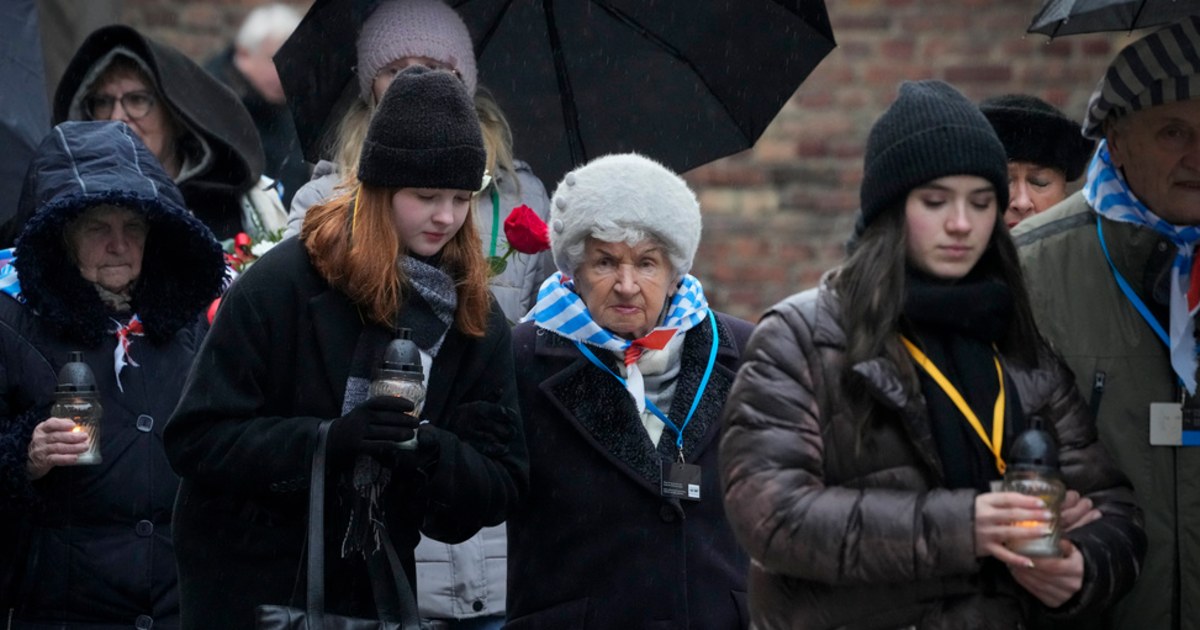Icon: enlarge
A quarter of a century after the slaughter, Ramiz Nukić still finds bones and clothing from the dead
Photo:
Keno Verseck
Ramiz Nukić lives in the midst of idyllic nature.
His house stands on a gentle mountain slope, surrounded by woods, hay meadows and orchards.
Some sheep graze peacefully.
The view into the valley and over the mountains in the distance is wonderful.
But the idyll is deceptive.
Because the earth here is soaked with the blood of murdered people.
And it's still full of bones.
In addition, old clothes, tin cans, tin cups - the little that people take with them when they run for their lives.
When he fled, Ramiz Nukić only carried some identification documents and a pistol with a few cartridges.
The last bullet would have been for himself, he says.
He didn't expect to survive.
Today he drove his small, old tractor and a trailer into a wooded area on the Steinerne Berg, a few hundred meters from his house.
A few days ago he piled up lost property there, old jackets and shoes.
300 murdered people discovered
He is now looking further.
He combs the leaves with a stick.
Before long he found three bones: "A thigh and probably parts of the upper arm." Then he respectfully places them next to a tree and covers them with leaves and branches.
Icon: enlarge
The victims are also identified by clothing or personal effects
Photo: Keno Verseck
Ramiz Nukić is a farmer and has never read an anatomy book.
But he learned which bones belong to humans and which to animals.
He will now contact forensic doctors and lead them to the site.
You will take photos of everything and later assign the findings by means of DNA comparisons.
Kamenice, a hamlet in the mountains of eastern Bosnia.
Ramiz Nukić, 58, was born here.
He survived the Srebrenica genocide here in July 1995.
He has returned, he has rebuilt his destroyed house - and he is still looking for the remains of the victims here.
Nukić found almost 300 people who died within a radius of several kilometers.
"I don't know if God gave me this job," he says.
“It's very difficult when I search because I see all the terrible pictures from back then every time anew.
But I have to and want to search.
It's something that comes from my heart. "
It is fifteen kilometers as the crow flies from Kamenice to the town of Srebrenica.
In July 1995, when the army of the Bosnian Serbs marched into the UN protection zone there, around 15,000 mostly unarmed Muslim men and boys fled.
Your destination is the liberated area near the city of Tuzla, seventy kilometers to the northwest.
For days they wander through the mined forests.
General Ratko Mladic's soldiers fire at them with grenades and rockets.
It is a manhunt, it leads to the worst massacre in Europe after 1945.
Ramiz Nukić is also among the refugees.
On the morning of July 12, 1995, his column was ambushed at Steinerne Berg.
Hundreds of people die in the hail of shells.
He crouches between trees and bushes some distance from the center of the attack.
Nukić survived and continued to run for five days.
His father and two of his brothers are captured and later murdered.
Father and brothers in the mass grave
Nukić's ancestors have lived in the Kamenice area for generations.
Even for himself, it was never an option to leave his homeland permanently.
He returned in 2002 despite the horror that for him is forever linked to the place of his childhood.
Icon: enlarge
Ramiz Nukić, the farmer, has learned to tell human and animal bones apart
Photo: Keno Verseck
He found the remains of the dead in the ruins of his house.
He called the Podrinje Identification Project (PIP) in Tuzla.
The institute with the inconspicuous name has been one of the world's leading institutions for two decades.
The PIP people are experts in matching bones, clothing and other remains with the names of missing people.
And there have been many of them in Bosnian soil since the genocidal war in the 1990s.
"It was then that I had the idea of looking for my father and my brothers," says Nukić.
“They were later found in mass graves elsewhere.
But I continued my search for the dead. "
In July 1995, Bosnian Serb soldiers murdered more than 8,000 people in the area around Srebrenica and in the northern Drina Valley, almost all of them Muslim men and boys.
Most of the victims were found in mass graves in the first years after the genocide.
But even today there are still finds of murdered people.
They are scattered in the woods and rock niches, only barely buried.
more on the subject
Judgment against Radovan Karadzic: A life behind bars for the "butcher of the Balkans" By Keno Verseck
So far, the remains of around 7,000 people have been identified.
It is thanks to Rifat Kešetović and his team.
The professor of forensic pathology at the University of Tuzla has headed the Podrinje identification project since 1999. It is affiliated with the International Commission for Missing Persons (ICMP), which was founded in 1996 for the victims of the Bosnian War and which now has projects around the world.
The PIP is located on the northern outskirts of Tuzla.
The remains of thousands of people who have not yet been fully identified are stored in a large, refrigerated hall, packed in plastic bags.
Here, the DNA of each bone is compared with the DNA from blood samples from relatives.
The coroners also try to reconstruct the causes of death and what happened.
The survivors should find peace
Rifat Kešetović has his office in a container barrack that is crammed with files.
He is also responsible for notifying relatives when their murdered relatives are identified and where the remains were found.
He also coordinates the transfer of evidence to the war crimes tribunal in The Hague.
"The experience of the ICMP in the search for missing persons, particularly because of the use of DNA technology, is certainly invaluable and pioneering work worldwide," says Kešetović.
“In the Srebrenica case, we were able to clarify the fate of over 80 percent of the missing.
But we shouldn't forget how families feel who still don't know the fate of their loved ones. "
Kešetović is a humble man who is reluctant to give interviews.
The relatives of victims speak of him and the work of his team with great awe and respect.
"For us survivors, it is above all important that we bury our murdered loved ones and have a place where we can pray for them," says Hasan Hasanović from the Srebrenica Memorial in Potočari.
He lost his father and twin brother on the Srebrenica death march.
Many surviving relatives speak of Ramiz Nukić with great gratitude.
Because no other individual in eastern Bosnia has been searching so tirelessly and for so long for the victims of the genocide.
Nukić lives with his wife, daughter and three grandchildren in poor conditions.
They live from the fruit and vegetables that they grow in their fields, and sometimes the Nukics sell something at markets in the area.
Most of those in Bosnia who somehow dealt with the Srebrenica massacre know Nukić's name.
But nobody pays him for his search.
And no Bosnian government has ever honored him - although the memory of the Srebrenica genocide is a central element in the identity of the Bosnian state.
Nevertheless, he says: "I will keep looking as long as I can and as long as the last victim has not been found."
Icon: The mirror





/cloudfront-eu-central-1.images.arcpublishing.com/prisa/37O5SB6ZWJBCVDW25CBSGO4YOI.jpg)



/cloudfront-eu-central-1.images.arcpublishing.com/prisa/QY5MBY2P2NDS3GSQJZP5S7XYSA.JPG)